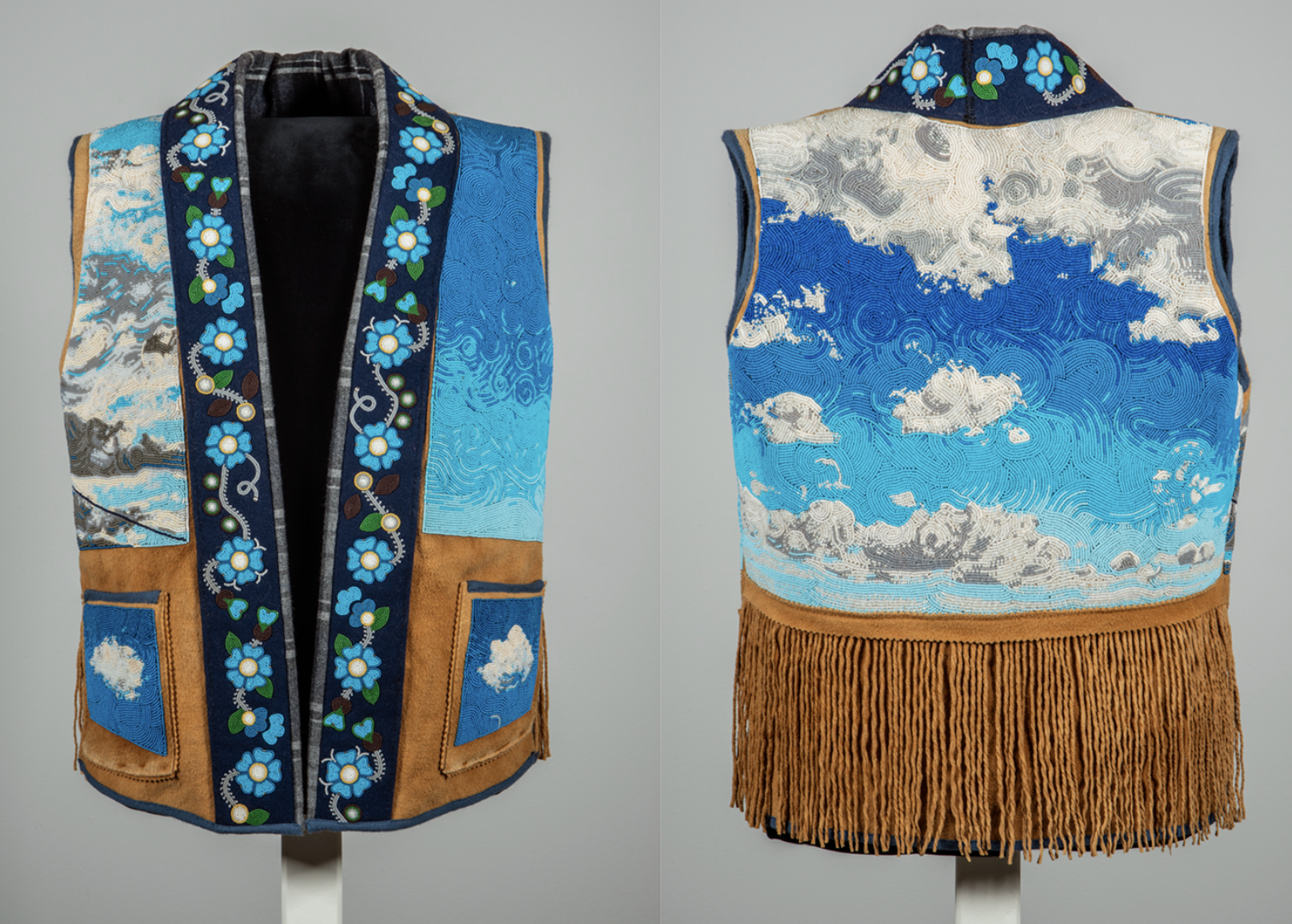
- Details
- By Kaili Berg
A major exhibition showcasing the depth and power of contemporary Native beadwork is opening April 12 at the Eiteljorg Museum located in Indianapolis.
Radical Stitch, one of the most expansive exhibitions of its kind, features around 100 pieces by Indigenous artists from across North America.
Organized by the MacKenzie Art Gallery in Regina, Saskatchewan, this is the exhibition’s only U.S. stop. It will be on view through August 3.
Artists explore everything from food sovereignty and pop culture to Indigenous Futurism, a genre that reimagines Native life through speculative, often sci-fi lenses.
Many of the featured artists come from a range of tribal nations and experiences. Seven of them are past recipients of the Eiteljorg’s Contemporary Art Fellowship.
Glass beads became part of Native art traditions after being introduced through trade in the 1800s. Since then, beadwork has grown into a form of creative and cultural expression.
“These meticulous details and faceted surfaces are dazzling to behold — and contain meaningful connections to both global exchange and cultural resilience,” Eiteljorg curator Laura Fry said.
To celebrate the opening, the museum is hosting several events. On April 10, visitors can meet two of the artists during an afternoon session included with regular museum admission.
The evening of April 11 is a members-only celebration, offering a chance to meet the curators and artists.
Then on opening day, April 12, the museum will host a public gallery talk in the morning with Eiteljorg Curator of Native American Art Dorene Red Cloud (Oglala Lakota), the exhibition’s co-curators Michelle LaVallee (Chippewas of Nawash Unceded First Nation Ojibway), Cathy Mattes (Michif/Métis), and Sherry Farrell Racette (Timiskaming First Nation Métis), along with artists Nico Williams (Aamjiwnaang First Nation Anishinaabe), Audie Murray (Cree/Métis), and Catherine Blackburn (English River First Nation Dene).
That afternoon, there will be a panel discussion titled Resisting While Transforming, focused on how beadwork acts as a tool of resistance and transformation, followed by a live demonstration by one of the featured artists.
More Stories Like This
Zuni Youth Enrichment Project and Partners at Ho’n A:wan Productions Launch 8th Annual Delapna:we ProjectChickasaw Holiday Art Market Returns to Sulphur on Dec. 6
Center for Native Futures Hosts Third Mound Summit on Contemporary Native Arts
Filmmakers Defend ‘You’re No Indian’ After Demand to Halt Screenings
A Native American Heritage Month Playlist You Can Listen to All Year Long
Help us defend tribal sovereignty.
At Native News Online, our mission is rooted in telling the stories that strengthen sovereignty and uplift Indigenous voices — not just at year’s end, but every single day.
Because of your generosity last year, we were able to keep our reporters on the ground in tribal communities, at national gatherings and in the halls of Congress — covering the issues that matter most to Indian Country: sovereignty, culture, education, health and economic opportunity.
That support sustained us through a tough year in 2025. Now, as we look to the year ahead, we need your help right now to ensure warrior journalism remains strong — reporting that defends tribal sovereignty, amplifies Native truth, and holds power accountable.
 The stakes couldn't be higher. Your support keeps Native voices heard, Native stories told and Native sovereignty defended.
The stakes couldn't be higher. Your support keeps Native voices heard, Native stories told and Native sovereignty defended.
Stand with Warrior Journalism today.
Levi Rickert (Potawatomi), Editor & Publisher


